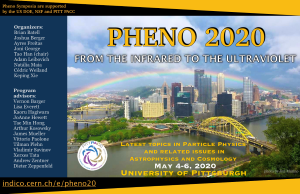Speaker
Description
In a fertile patch of the string landscape which includes the Minimal Supersymmetric Standard Model (MSSM) as the low energy effective theory, rather general arguments from Douglas suggest a power-law statistical selection of soft breaking terms ($m_{soft}^n$ where $n=2n_F+n_D-1$ with $n_F$ the number of hidden sector $F$-SUSY breaking fields and $n_D$ the number of $D$-term SUSY breaking fields). The statistical draw towards large soft terms must be tempered by requiring an appropriate breakdown of electroweak (EW) symmetry with no contributions to the weak scale larger than a factor 2-5 of its measured value, lest one violates the (anthropic) atomic principle. Such a simple picture generates a light Higgs boson with mass $m_h\simeq 125$ GeV with sparticles (other than higgsinos) typically beyond LHC reach. Then we expect first and second generation matter scalars to be drawn independently to the multi-TeV regime where the upper cutoff arises from two-loop RGE terms which drive third generation soft masses towards tachyonic values. Since the upper bounds on $m_0(1,2)$ are the same for each generation, and flavor independent,
then these will be drawn toward quasi-degenerate values. This mechanism leads to a mixed decoupling/quasi-degeneracy solution to the SUSY flavor problem and a decoupling solution to the SUSY CP problem.

